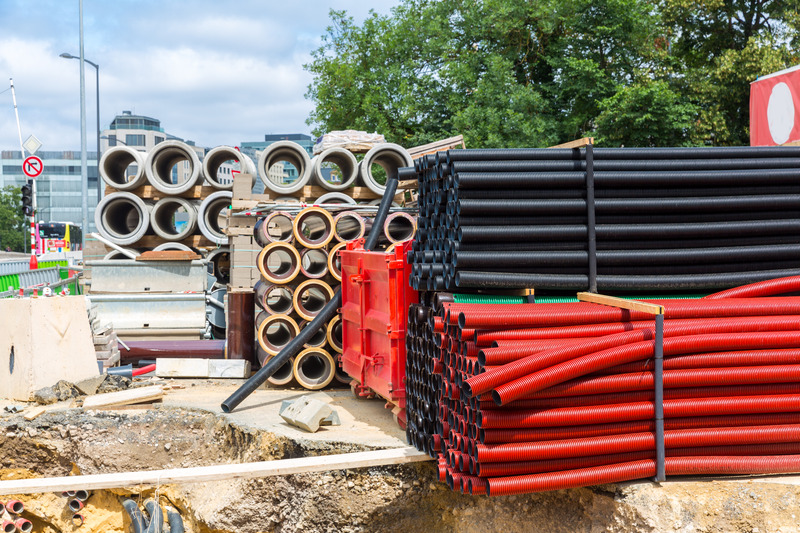The Role of Building Materials in Mould Prevention

How Do Building Materials Influence Mould Growth?
Building materials are fundamental in mould prevention. Mould growth largely depends on the type of materials used in construction and their ability to withstand moisture. Certain materials, due to their composition and treatments, can either inhibit or promote mould development.
Mould-resistant plaster board, for example, is engineered to combat moisture-related problems. It features a moisture-resistant core and a treated paper facing that helps prevent mould growth. This type of plaster board is particularly beneficial in areas prone to dampness, such as bathrooms and kitchens, where high humidity can easily lead to mould issues.
In contrast, timber is notably susceptible to mould. Wood’s natural porosity allows it to absorb moisture, creating a perfect breeding ground for mould. Untreated timber used in structural elements like framing or flooring can pose significant problems. Over time, if timber remains exposed to moisture, it may not only foster mould growth but also lead to structural damage. The mould weakens the wood fibres, compromising its strength and integrity.
What Are the Best Building Materials for Moisture-Prone Areas?
For areas that experience higher moisture levels, such as bathrooms, kitchens, and basements, choosing the right materials is crucial to prevent mould growth. Cement board is an excellent choice in these environments. Unlike traditional plaster boards, cement boards do not absorb water. It provides a durable and moisture-resistant surface, making it a suitable alternative for wet areas.
Additionally, treated wood or timber that has been pressure-treated to resist moisture is a better option than untreated wood. This treatment helps protect the wood from absorbing water and supports its longevity in damp conditions. Similarly, fibre-cement products can be used in place of wood in certain applications, offering resistance to moisture and mould.
How To Maintain Maintain A Dry Environment Within Your Walls
Another essential aspect is the insulation used in your home. Moisture-resistant insulation materials are critical for controlling mould growth in walls and ceilings. Closed-cell foam insulation is particularly effective. Its dense structure prevents moisture infiltration, helping to maintain a dry environment within your walls. This type of insulation can also contribute to better energy efficiency by reducing heat loss and keeping indoor temperatures more stable.
How Can You Choose the Right Materials for Your Home?
Selecting the right building materials involves evaluating their resistance to moisture and their durability. When choosing materials for construction or renovation, consider their performance in high-humidity environments. Look for products specifically designed for such conditions. For instance, mould-resistant paints and coatings can further enhance the protection of walls and ceilings.
Proper installation and maintenance are equally important. Ensure that materials are installed according to manufacturer guidelines to achieve maximum effectiveness. For example, correctly sealing joints and ensuring proper ventilation can significantly impact the performance of moisture-resistant materials.
Why Have Regular Building Inspections
Regular inspections and maintenance help in maintaining the integrity of building materials. Check for any signs of wear and tear, such as cracks or discolouration, which might indicate potential moisture issues. Address any problems promptly to prevent them from escalating into more significant mould-related issues.
In addition, consider the overall design of your home. Good architectural design can play a crucial role in mould prevention. For instance, ensuring adequate ventilation and proper drainage around the building can help prevent moisture accumulation and reduce the likelihood of mould growth. Effective design choices, such as sloped roof lines and well-placed gutters, can direct water away from the building and prevent it from seeping into vulnerable areas.
What Are the Long-Term Benefits of Using Mould-Resistant Materials?
Investing in mould-resistant building materials offers several long-term benefits. Primarily, these materials help to ensure a healthier indoor environment. By reducing the potential for mould growth, you can prevent associated health issues such as respiratory problems, allergies, and other mould-related illnesses.
Moreover, using high-quality, moisture-resistant materials can enhance the longevity and durability of your home. Materials that withstand moisture are less likely to deteriorate, reducing the need for frequent repairs and replacements. This, in turn, can lead to cost savings over time as you spend less on maintenance and repair work.
In summary, the choice of building materials significantly influences mould prevention in Australian homes. Selecting moisture-resistant materials and ensuring proper installation and maintenance can help protect your home from the detrimental effects of mould. By considering these factors, homeowners can create a more resilient and healthier living environment, ultimately contributing to the long-term well-being of both the property and its occupants.

